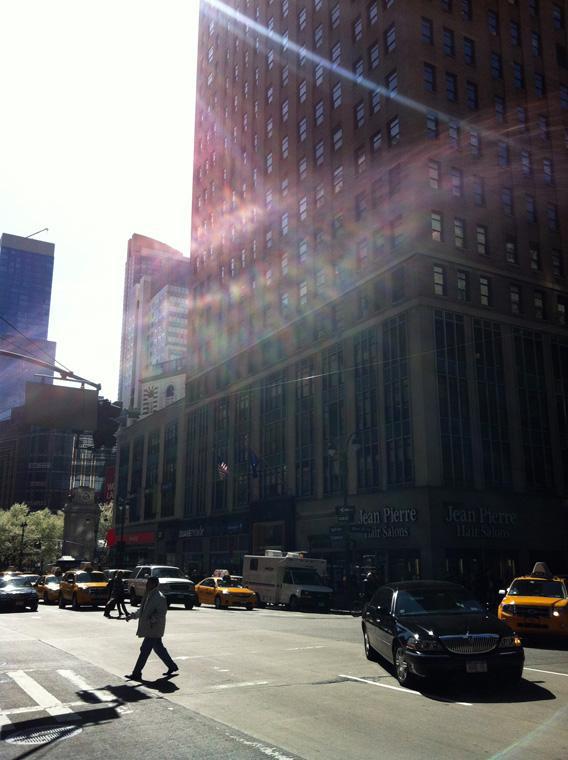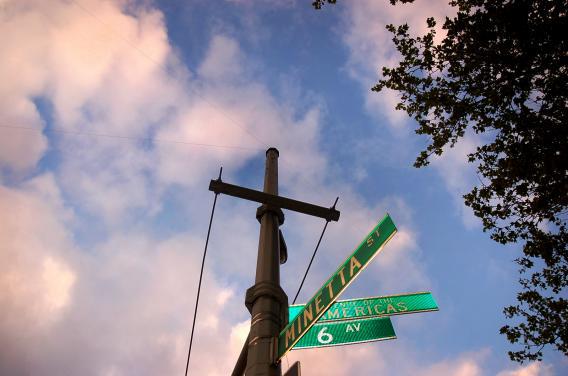The first in a new occasional series in which we examine mysterious or overlooked objects in our visual landscape. If you would like to suggest an object for the series, see the email address provided below.

Juliana Jimenez/Slate.
Look closely at the picture above. See the wire attached to the lamppost? While the photo above was taken in New York, such wires can also be seen in St. Louis, Denver … even Overland Park, Kan. They are easy to miss. Here’s another nearly invisible example:

Mark Vanhoenacker/Slate.
What is that thin line, flickering in the sunlight? I’ll give you a few guesses:
a) They’re supplemental electrical wires. When the strain on a local power grid reaches a certain point, these supplemental cables equalize static charges between adjacent sections of the grid.
b) They’re a religious thing. To faithful observants, the wires mark a boundary between two different kinds of “domain.”
c) They’re leftover guerilla marketing. When Leonard Cohen toured the United States in 2005, a PR firm put up wires as a visual pun on the songs “Bird on a Wire” and “Everybody Knows.” Most were unlicensed in the first place and were never taken down.
d) They’re used for public construction. When repair or installation crews need to pull a telephone or telecom cable over a busy road, they can attach it to the wire and pull it across to the other pole, without having to interrupt traffic on either the road or the sidewalk.
Did you make your guess? The answer is …
… b) The wire is part of an eruv (plural: eruvin), a physical boundary delineated or erected by certain Jewish communities to accommodate religious restrictions that limit what can be physically carried between public and private domains on the Sabbath. Basically, eruvin reclassify a lot of public space as “private.” (You can see a Google map of eruv lines through Manhattan at left.)
As the writer Sharonne Cohen explains, eruvin were created by “the sages of the Talmud” to get around traditional prohibitions on carrying “house keys, prayer books, canes or walkers, and even children who cannot walk on their own.” Calvin Trillin memorably described the eruv as a “magic schlepping circle.”
A cynic might wonder at the effort required to string wire around huge swaths of public space, in order to allow adherents of a religion to do what the tenets of that religion would otherwise prohibit. Even some religiously-minded observers might find it hard to imagine a God that wouldn’t regard this as the flagrant concoction of a city-sized loophole.
Forward thinkers, meanwhile, might wonder if a loving God will someday accept digital rather than physical demarcations of eruv boundaries.
Eruvin have to be regularly checked to ensure their integrity; the results of these checks are often posted online, and are sometimes available via a telephone hotline. (In Denver, dial (303) 836-ERUV.) And they’re far more common than you might imagine. They’ve occasionally surfaced in pop culture, and have caused the occasional legal hiccup. For me, there is a gossamer grace in these nearly invisible boundaries—and in their faithful creation and maintenance.

Juliana Jimenez/Slate.
Seen something recently and wondered what it is? Write me at whatisthat@markvr.com and we’ll consider it for a future installment of this series. Keep your eyes peeled.